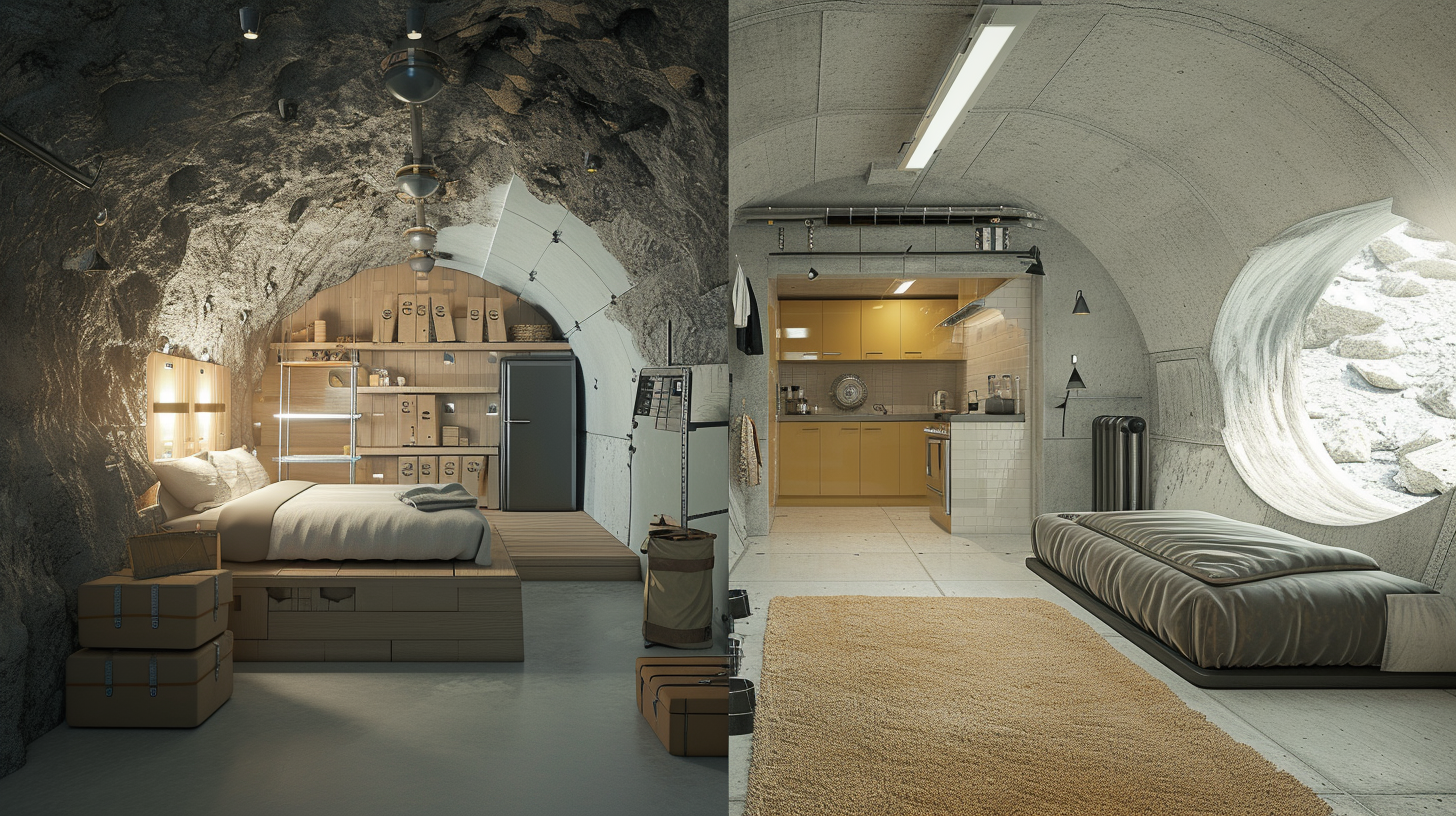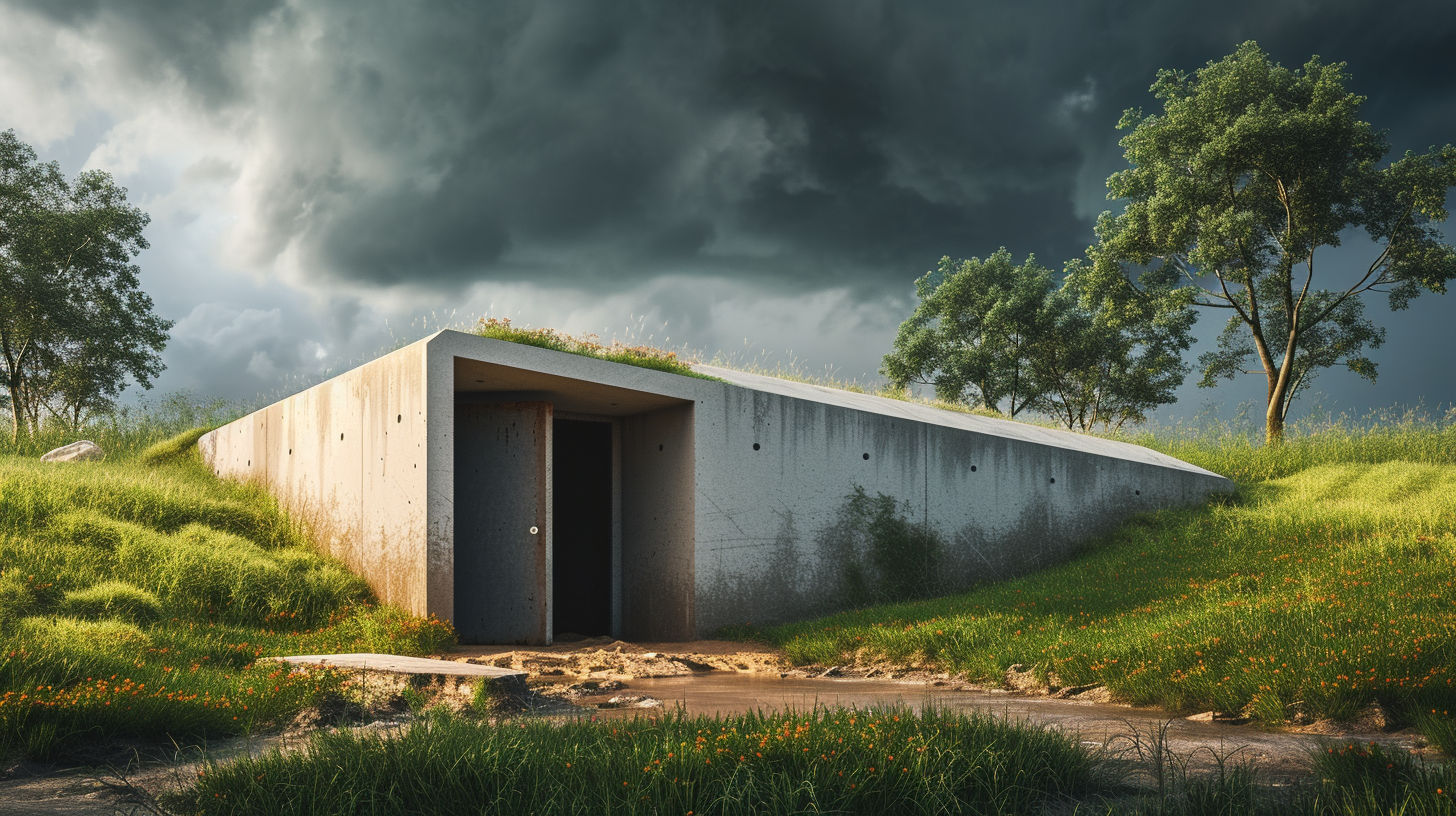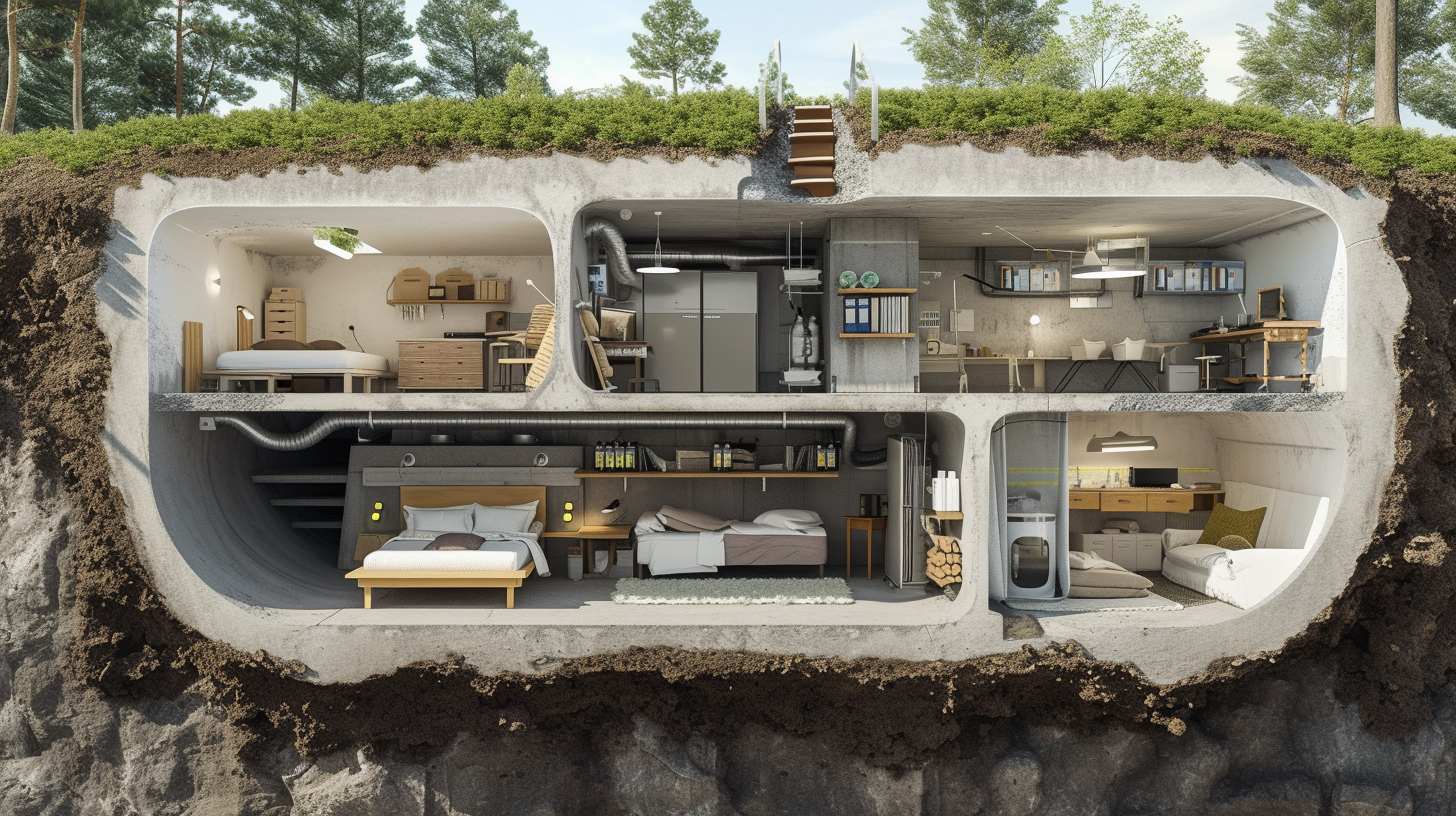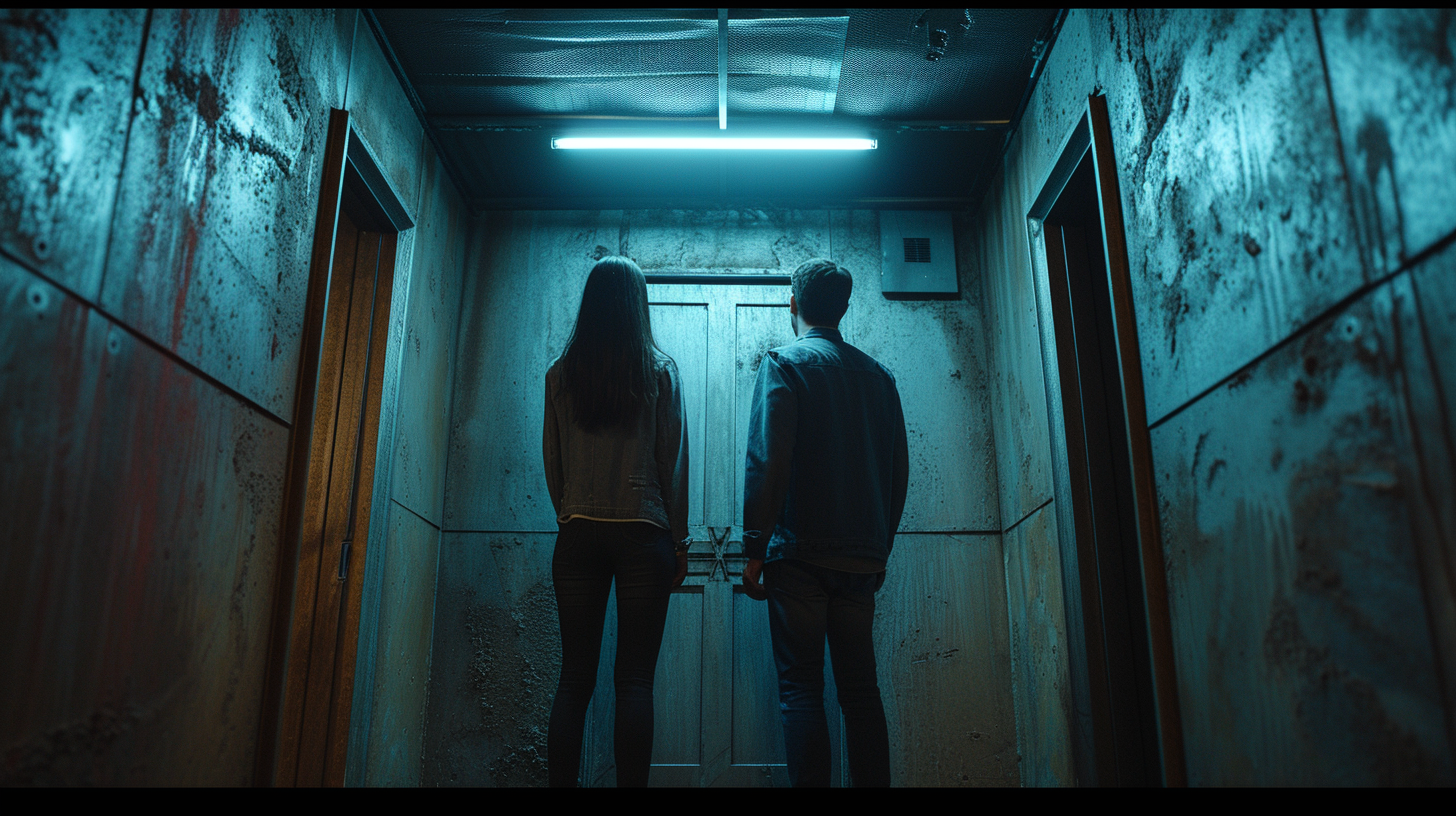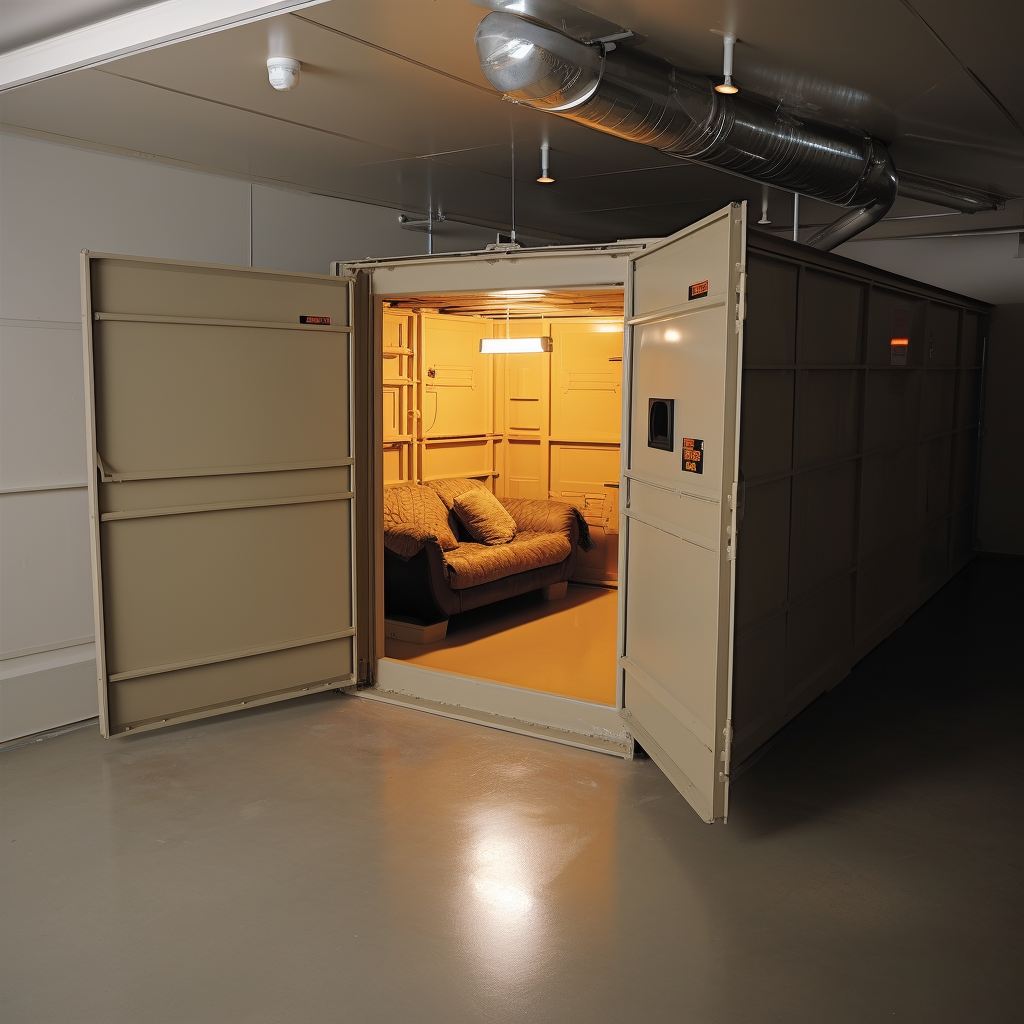When the tornado sirens blared across the small town of Moore, Oklahoma, residents had mere minutes to seek refuge, showcasing the critical importance of having a safe place during such emergencies. You might think a storm shelter and a survival bunker are interchangeable, yet they serve different purposes and come with their own set of features tailored to specific needs.
While a storm shelter is your go-to for short-term safety against high-speed winds and debris, a survival bunker offers a more comprehensive solution, equipped for long-term protection against a variety of threats, from natural disasters to societal breakdowns.
Deciding between the two isn’t just about immediate safety; it’s about understanding the level of preparedness you’re aiming for.
Let’s explore the nuances that set them apart and guide you towards making an informed decision on safeguarding your future.
Key Takeaways
- Storm shelters are designed to protect against severe weather, offering robust protection against high-speed winds and flying debris.
- Safe rooms, on the other hand, are constructed above ground and provide better flood resistance, making them a good choice for areas prone to heavy rainfall.
- Underground storm shelters are more invisible and offer optimal long-term protection, while safe rooms are more visible and accessible for rescuers.
- When choosing between storm shelters and safe rooms, it is important to consider the specific threats in your area and your needs for protection. Reputable providers like Oklahoma Shelters can help you install the right option for your safety and peace of mind.
Defining Storm Shelters
Storm shelters, designed to protect against severe weather, range from underground units prone to flooding to above-ground safe rooms reinforced with steel. When you’re weighing the difference between a shelter or safe room, it’s crucial to consider the threats in your area.
Underground tornado shelters offer robust protection against high-speed winds and flying debris, specifically designed to shield you from the brute force of extreme weather. However, they’ve got a downside; heavy rain can make them prone to flooding, rendering them unusable when you might need them the most.
On the flip side, safe rooms, constructed above ground, dodge the flooding issue thanks to their elevation. Reinforced steel walls give them the strength to withstand tornado forces, making them a resilient choice. While tornadoes might leave underground shelters buried, safe rooms stand out, making it easier for rescuers to find you post-storm.
Understanding Survival Bunkers
Survival bunkers, meticulously engineered to withstand extreme weather conditions, offer you robust protection from both high-speed winds and potential flooding. Unlike traditional storm shelters or safe rooms, these bunkers are designed to ensure your family’s safety against a wide range of threats, including tornadoes, hurricanes, and even home invasions. Their underground nature and waterproof construction make survival bunkers an optimal choice for long-term protection.
| Feature | Benefit |
|---|---|
| Underground Construction | Provides protection against flooding and high-speed winds. |
| Tailored Construction | Ensures the bunker fits your specific needs and location risks. |
| Enhanced Security | Offers additional protection against home invasions. |
Choosing the right shelter involves understanding the difference between a safe room, a storm shelter, and survival bunkers. While safe rooms and tornado shelters are essential in many parts of the United States, survival bunkers go a step further. They are constructed using advanced techniques and materials specifically chosen for their durability and resistance. When installed by reputable providers like Oklahoma Shelters, these bunkers offer unparalleled security and peace of mind.
Construction Differences
Delving into the construction differences, it’s crucial to note that underground shelters and safe rooms offer distinct advantages and challenges in terms of flood resistance and accessibility. When you’re choosing between a safe room and a storm shelter, understanding these nuances is key.
- Flood Resistance: Underground storm shelters, while offering protection from high winds, are susceptible to flooding during heavy rainfall due to their placement. On the other hand, safe rooms are typically built above ground with reinforced steel, providing them with an edge in flood resistance.
- Accessibility and Visibility: Safe rooms have the advantage of being more visible and accessible, making it easier for rescuers to locate and reach them in the aftermath of a storm. Underground shelters might get buried under debris, complicating rescue efforts.
- Construction Materials: Companies like Valley Storm Shelters use ¼ steel plate for walls, floor, and doors of their shelters, ensuring durability and reliability. This high-quality material choice is crucial for the structural integrity of rooms and storm shelters.
- Service Areas: Oklahoma Shelters, known for constructing top-notch safe rooms and storm shelters, provide their services across various areas including Norman, Moore, Tulsa, Oklahoma City, and Edmond, catering to a wide range of needs and locations.
Purpose and Protection Level
When deciding between safe rooms and storm shelters, it’s crucial to consider the specific purpose and level of protection each offers based on your unique needs. If you’re in Oklahoma or a similar tornado-prone area, understanding the difference in protection level between these options is vital.
Safe rooms, constructed above ground with reinforced steel, provide excellent flood resistance and are more visible, making it easier for rescuers to locate you. They’re a reliable choice for immediate protection, especially in service-oriented businesses or homes requiring quality work.
On the other hand, underground storm shelters offer unbeatable protection against the high-speed winds of a tornado. However, they’re susceptible to flooding during heavy rains and can be harder to access by rescue teams if buried under debris. This makes storm shelters ideal for long-term preparation against natural threats, serving a slightly different purpose than safe rooms.
Ultimately, your choice between a safe room and a storm shelter should be guided by the expected threats in your area and your specific needs for protection.
Oklahoma Shelters, known for their quality work, can help you decide and install the right option, ensuring your safety and peace of mind.
Choosing Your Safety Solution
Deciding between a safe room and a storm shelter boils down to evaluating your specific safety needs and the natural threats you face. When choosing your safety solution, it’s crucial to understand the difference between storm shelters and survival bunkers to make an informed decision. Here’s what you Need to Know:
- Location and Threats: If you’re in an area prone to flooding, an above-ground safe room might be your best bet due to its flood resistance and reinforced steel construction. Underground storm shelters or tornado shelters, while excellent at protecting against high-speed winds and debris, are vulnerable to flooding.
- Visibility for Rescue: Safe rooms are easier for rescuers to locate after a disaster, reducing the risk of entrapment. This is a significant factor if you’re concerned about being buried under debris in an underground shelter.
- Protection Level: Ensure the structure you choose can withstand the specific natural threats in your area. Safe rooms should be built with reinforced steel to endure up to 300 mph tornado winds.
- Quality Work: Opt for reputable providers like Oklahoma Storm, known for their quality work in installing safe rooms and storm shelters in Oklahoma, offering free quotes and ensuring your family’s safety.
Conclusion
In conclusion, whether you’re leaning towards a storm shelter for immediate, weather-related threats, or a survival bunker for long-term security against various disasters, it’s crucial to weigh your needs.
Storm shelters offer quick refuge during severe weather, while survival bunkers provide comprehensive protection and living facilities. Your choice should align with the specific risks you face and your desire for peace of mind.
Remember, the best safety solution is the one that ensures your and your family’s well-being.

